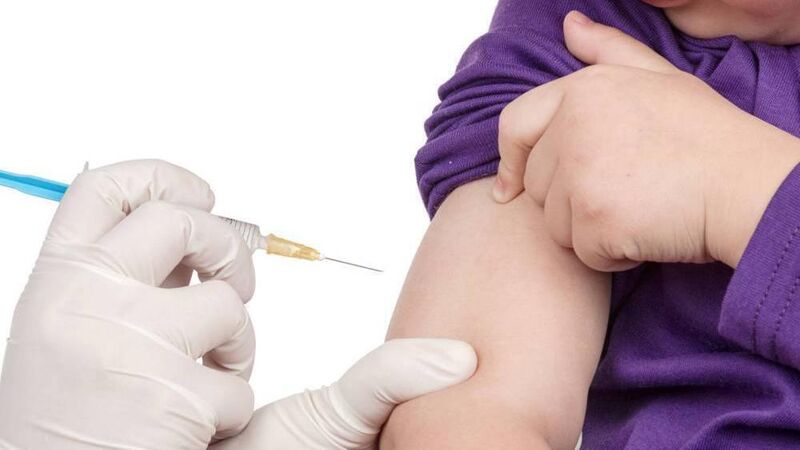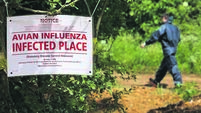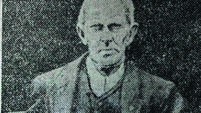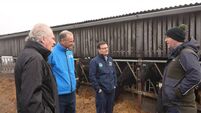Cork Views: A time to salute the wonder of vaccines

Vaccines have been “one of the most important medical advances in human history”
One in five Irish people would not take a traditional vaccine, and one in four said they would not take an mRNA vaccine, a global research project reported earlier this month.
The Worldwide Independent Network of MR (WIN), an association of independent market research and polling firms, surveyed over 33,000 people in 38 countries, including Ireland. It found a third globally either reject or are unsure about traditional vaccines.
The survey included 1,000 people in Ireland, where 73% said they would accept a traditional vaccine and 67% would accept an mRNA vaccine. While these figures are higher than the European average (68%, 60%) they are still way below what is needed for common vaccine preventable illnesses to be kept at bay.
Ongoing vaccine hesitancy is a real challenge for medical professions. Innovative methods to overcome uncertainty amid widespread vaccine misinformation are urgently required if entirely preventable and life-threatening illnesses are to be kept out of communities.
The vaccine story has been beset with heroes and villains. The latter tend to get widespread media coverage that fuels the fire of vaccine hesitancy, and include Andrew Wakefield, a UK doctor who in 1998 published a fraudulent study in The Lancet alleging the MMR vaccine caused autism. The predictable reaction ensued with frightened parents refusing the MMR vaccine for their children and vaccination rates plummeting. In 2010, The Lancet retracted the study and Wakefield was barred from practicing medicine. But damage was done and the rumours go on.
Probably the loudest anti-vaccine voice is Robert F Kennedy Junior (RFK Jnr). As a long time environmental lawyer, he has led the Children’s Health Defense, a non-profit organisation recognised by experts as one of the leading spreaders of vaccine misinformation.
Appointed U.S Head of the Department of Health and Human Services, RFK Jnr’s shifting position on vaccines - veering from anti – vaccine to mixed messaging on the evidence of their safety and efficacy, is fuelling doubt and propagating mistrust in the organisations that both develop and promote vaccines.
The vaccine heroes include Edward Jenner.
As a 13-year-old medical apprentice, he is reputed to have overheard an English dairy maid in 1762 say: “I shall never have smallpox for I have had cowpox. I shall never have an ugly pockmarked face.”
It was 34 years later, in 1796, that he acted on those remarks, vaccinating an eight-year-old boy with a small sample from another dairymaid’s coxpox lesion and two months later exposing the same boy to smallpox.
In the absence of an ethics committee, the experiment worked and Jenner became the creator of the world’s first vaccine.
Almost 200 years later, in 1980, smallpox became the one and only disease to have been vaccinated out of existence.
Jonas Salk and Albert Sabin, researchers at the National Foundation for Infantile Paralysis in the 1950s, were simultaneously trying to develop a polio vaccine. Salk was working on using a killed polio virus and Sabin was working on using a live weakened virus.
Salk was the first to be successful in 1955 and Sabin followed with a successful vaccine in 1962. Both have pushed polio to the brink of eradication. It is now endemic in only three countries – Afghanistan, Pakistan and Nigeria.
Pearl Hendrick and Grace Eldering were doctors working in public health in the 1930s in the U.S Michigan Department of Health. In the course of their work, they were concerned about the number of children succumbing to whooping cough that was causing 6,000 childhood deaths per year and many more illnesses, particularly among the least well off.
Kendrick and Eldering started collecting pertussis samples from patients on ‘cough plates’ and researching how to incorporate the virus into a vaccine. They tested it, first on mice, then on themselves and finally on 734 children. Of those, only four contracted whooping cough that year compared to 45 of the 880 unvaccinated children in the control group.
Within 15 years of the development of the pertussis vaccine, whooping cough in the U.S plummeted by 75%. By 1960, cases had fallen by 95%.
More recently, in 2023, a biochemist born in Hungary and an American immunologist won the Nobel prize for Physiology or Medicine- for research that led to the development of two covid-19 vaccines.
Katalin Karikó and Drew Weissman had collaborated for decades to try to find ways to use genetic material called messenger RNA (mRNA) to make vaccines.
When the covid pandemic erupted in 2020, the vaccines developed by Moderna and Pfizer-BioNTech used Karikó and Weissman’s techniques to create highly safe and effective vaccines in record time.
The advance spurred interest in using mRNA technology in the management of other diseases, from flu to cancer. Awarding the Nobel prize, the panel said the discovery ‘fundamentally changed our understanding of how mRNA interacts with our immune system.’
But the award for the unsung vaccination hero that has quietly saved millions of lives has to go to a little known architect frustrated by the lack of healthcare access in poorer communities. In the early 1970s, John Lloyd, on sabbatical from architecture to study primary healthcare facilities in Kenya and Tanzania, discovered that inadequate vaccine storage infrastructure was causing vaccines to lose their effectiveness in high temperatures.
Subsequently working with Ghana health authorities, he discovered domestic fridges and picnic boxes made in Europe could not compete with 40C heat.
In 1977, Lloyd published a strategy paper outlining Ghana’s first vaccine cold chain and how it could be replicated in low-income countries. The strategy was later reproduced and implemented globally.
Key to the strategy was the development of a vaccine vial monitor, a heat sensitive label that changes colour progressively each time the vial is exposed to temperatures that are too high. The monitors are now affixed on all vaccines produced by UNICEF for global immunisation programmes.
In European Immunisation week, instead of focusing on the vaccine villains, let’s proclaim the work of the unsung heroes across the world that have been instrumental in developing one of the most important medical advances in human history.
Dr Catherine Conlon is a public health doctor in Cork







 App?
App?




